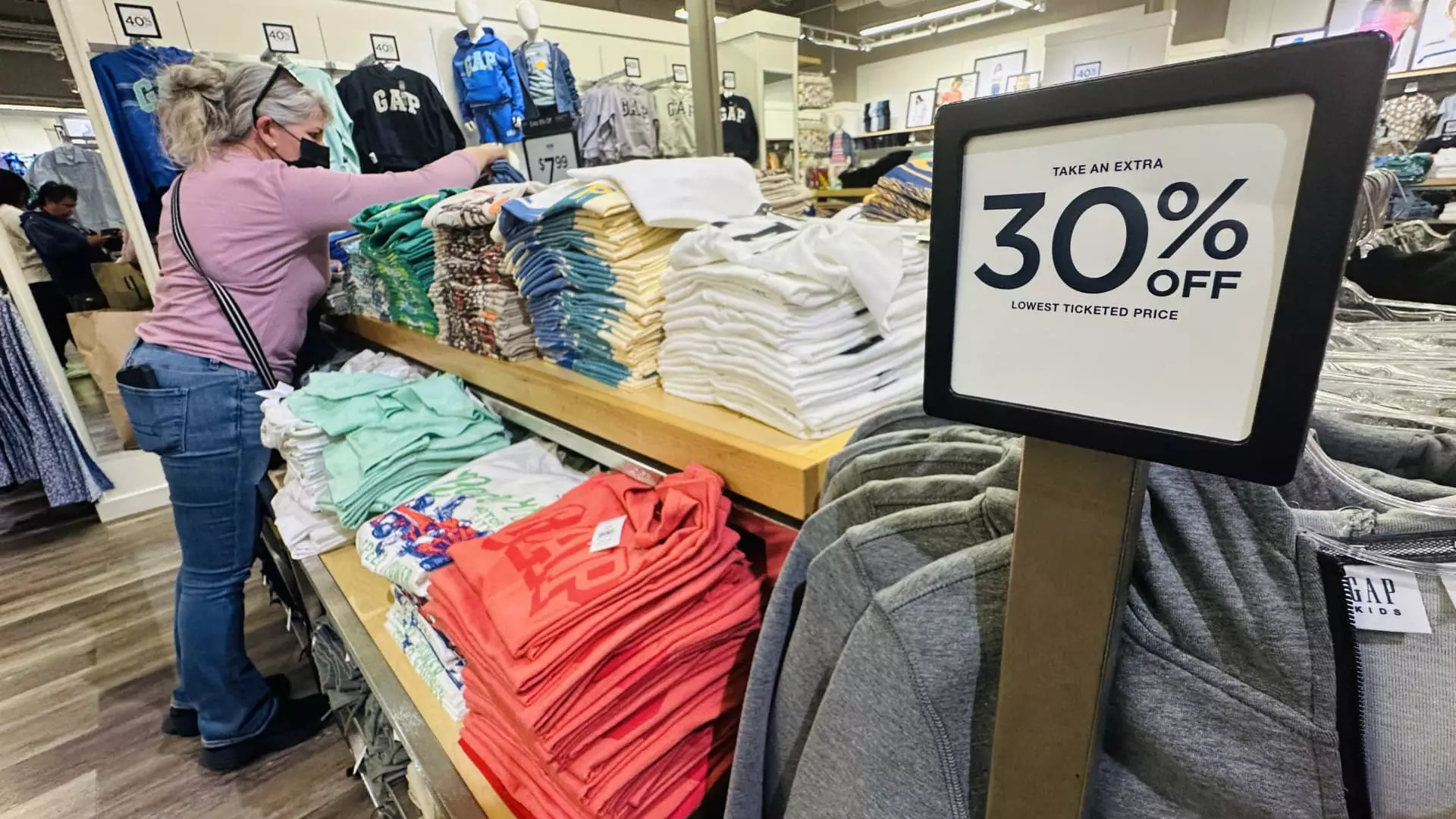As the political landscape continues to evolve, so too does the marketplace for consumer goods. With the implementation of tariffs on imported products, particularly in the apparel sector, American consumers are poised to face a considerable financial burden. Recent insights from the Yale University Budget Lab signal an alarming forecast: A staggering 64% increase in apparel prices for consumers is anticipated in the short term, with estimates suggesting these prices may remain 27% higher in the long run. This impending crisis is not merely an economic statistic; it translates to a heavier financial load for families across the country, particularly those in the middle and lower-income brackets.
The complexities surrounding tariffs reveal a distressing narrative about American commerce. While previous administrations may have engaged in trade negotiations that sought to circumscribe foreign competition, the current administration’s approach—marked by steep tariffs and stringent import controls—could prove detrimental to ordinary consumers. When we consider that roughly 97% of apparel consumed in the U.S. is imported, primarily from countries like China and Vietnam, the implications of these tariffs become increasingly concerning.
The Unraveling of Affordable Fashion
For many consumers, the rising costs will not be an abstract concern but an immediate and personal reality. Individuals who used to navigate their wardrobes with relative ease may find themselves forced to compromise on quality and brand in light of these economic constraints. With nearly 75% of consumers reporting they are already adjusting their purchasing habits due to escalating prices, the phenomenon dubbed “trade-down behavior” is likely to become even more prevalent. Shoppers are turning to thrift stores and secondhand options to cope with the relentless tide of inflation, a coping mechanism driven by necessity rather than choice.
The irony is palpable; a drive toward affordable fashion, initially eclipsed by the allure of luxury brands and fast fashion, is now being revitalized. Trade restrictions amplify the appeal of secondhand marketplaces, where economic savvy meets environmental mindfulness. However, this burgeoning thrift economy might also lead to a scarcity of quality pieces, thereby creating a different type of frustration among consumers.
Counterfeit Goods and the Changing Retail Landscape
The conversation about tariffs inevitably spills into the murky waters of counterfeiting. Historical patterns suggest that trade restrictions do not eliminate illicit goods; they simply shift the terrain for counterfeiters, leading to an increase in lower-quality imitations flooding the market. While regulations are tightening, innovative distribution strategies employed by counterfeiters indicate their agility in responding to changes in the legal landscape. The ongoing ratification of these tariffs, particularly the revocation of the de minimis exemption—allowing duty-free imports under a value threshold—introduces further complications for consumers while potentially enriching the counterfeit market.
As economic pressures mount, authentication services will become increasingly vital, yet demand for lower prices will foster a thriving market where imitation goods find patronage. Therefore, the consumer experience may become one of trepidation, raised eyebrows at deals too good to be true, and an ominous understanding that what glitters may not be gold.
Consumer Adaptation: The Rise of Re-Commerce
Faced with a more challenging economic environment, consumers are exhibiting greater agility in their purchasing preferences. A significant percentage, about 67%, are planning to change their shopping habits, with many directed towards secondhand stores or local alternatives. The resilience of the resale market signals a burgeoning cultural shift among consumers, especially younger generations embracing sustainability and thriftiness with renewed fervor.
This shift toward re-commerce—buying and selling pre-owned goods—presents an intriguing antidote to the rising costs of new apparel. As predicted, this segment of the retail market is on a fast track to growth, projected to soar to $291.6 billion by 2029—a testament to consumers wielding their purchasing power strategically. It signifies a monumental transformation, where the allure of trendy new items is eclipsed by a focus on value, authenticity, and sustainability.
What Lies Ahead for American Apparel?
With back-to-school shopping on the horizon, the apparel industry finds itself teetering on edge, grappling with the uncertainty fueled by tariff-induced pricing pressures. According to industry experts, the chaos reverberating through the supply chain is palpable, and retailers are scrambling to navigate these tumultuous waters.
In navigating the complex interplay between tariffs, import policies, and consumer behavior, the future remains uncertain. The specter of increased prices looms large, shifting consumer dynamics as families maneuver through a landscape fraught with economic strife. The outcome of impending trade agreements possesses the potential to rewrite the rules of engagement for the apparel industry, and until then, consumers will continue adjusting their lifestyles and buying habits in search of equilibrium in a destabilized market.

